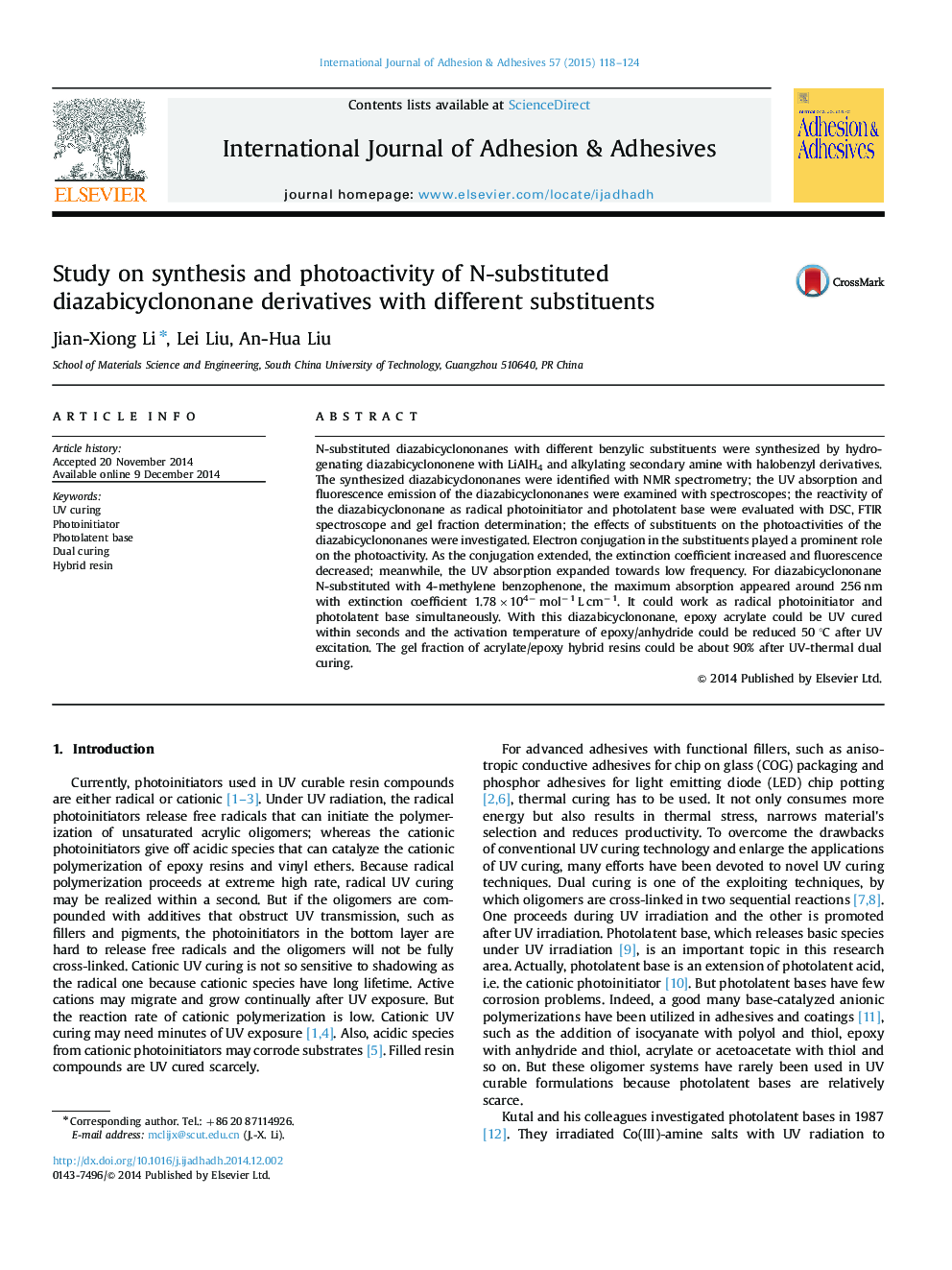| Article ID | Journal | Published Year | Pages | File Type |
|---|---|---|---|---|
| 773374 | International Journal of Adhesion and Adhesives | 2015 | 7 Pages |
N-substituted diazabicyclononanes with different benzylic substituents were synthesized by hydrogenating diazabicyclononene with LiAlH4 and alkylating secondary amine with halobenzyl derivatives. The synthesized diazabicyclononanes were identified with NMR spectrometry; the UV absorption and fluorescence emission of the diazabicyclononanes were examined with spectroscopes; the reactivity of the diazabicyclononane as radical photoinitiator and photolatent base were evaluated with DSC, FTIR spectroscope and gel fraction determination; the effects of substituents on the photoactivities of the diazabicyclononanes were investigated. Electron conjugation in the substituents played a prominent role on the photoactivity. As the conjugation extended, the extinction coefficient increased and fluorescence decreased; meanwhile, the UV absorption expanded towards low frequency. For diazabicyclononane N-substituted with 4-methylene benzophenone, the maximum absorption appeared around 256 nm with extinction coefficient 1.78×104− mol−1 L cm−1. It could work as radical photoinitiator and photolatent base simultaneously. With this diazabicyclononane, epoxy acrylate could be UV cured within seconds and the activation temperature of epoxy/anhydride could be reduced 50 °C after UV excitation. The gel fraction of acrylate/epoxy hybrid resins could be about 90% after UV-thermal dual curing.
